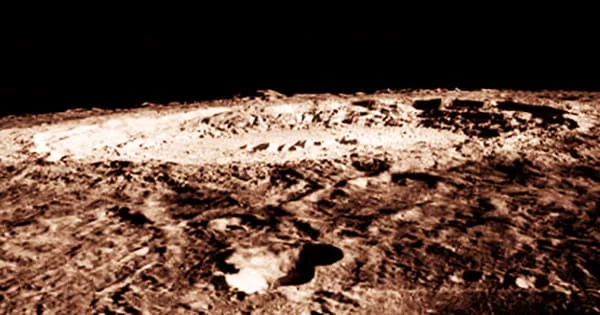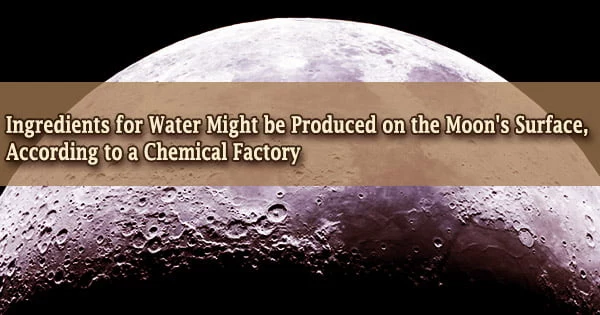NASA scientists have discovered that when a torrent of charged particles known as the solar wind slams onto the Moon’s surface at 450 kilometers per second (or almost 1 million miles per hour), it enriches the Moon’s surface with components that may produce water.
Scientists used computer software to replicate the chemistry that occurs when solar wind hits the Moon’s surface. They discovered that as protons from the Sun reach the Moon, they interact with electrons on the lunar surface, forming hydrogen (H) atoms. These atoms then travel through the surface, latching on to the numerous oxygen (O) atoms bound in the silica (SiO2) and other oxygen-bearing molecules that make up the regolith, or lunar soil. Hydrogen and oxygen combine to form the hydroxyl (OH) molecule, which is a component of water, or H2O.
We know how much hydrogen is coming in from the solar wind, we also know how much is in the Moon’s very thin atmosphere, and we have measurements of hydroxyl in the surface.
Tucker

“We think of water as this special, magical compound,” said William M. Farrell, a plasma physicist at NASA’s Goddard Space Flight Center in Greenbelt, Maryland, who helped develop the simulation. “But here’s what’s amazing: every rock has the potential to make water, especially after being irradiated by the solar wind.”
Understanding how much water or its chemical components are accessible on the Moon is essential to NASA’s objective of sending humans to establish a permanent presence there, according to Orenthal James Tucker, a Goddard physicist who led the simulation research.
“We’re trying to learn about the dynamics of transport of valuable resources like hydrogen around the lunar surface and throughout its exosphere, or very thin atmosphere, so we can know where to go to harvest those resources,” said Tucker, who recently described the simulation results in the journal JGR Planets.
Several spacecraft utilized infrared equipment to determine the chemistry of the Moon’s surface by measuring light emitted by it. NASA’s Deep Impact mission, which crossed the Moon on its way to Comet 103P/Hartley 2, NASA’s Cassini spacecraft, which passed the Moon on its way to Saturn, and India’s Chandrayaan-1, which orbited the Moon a decade ago, are among them. All of the evidence of water or its components (hydrogen or hydroxyl) was discovered.
However, how these atoms and molecules arise on the Moon remains a mystery. Although meteor strikes may trigger the required chemical processes, many scientists believe solar wind is the major cause. The solar wind theory is supported by Tucker’s simulation, which follows the lifespan of hydrogen atoms on the Moon.
“From previous research, we know how much hydrogen is coming in from the solar wind, we also know how much is in the Moon’s very thin atmosphere, and we have measurements of hydroxyl in the surface,” Tucker said. “What we’ve done now is figure out how these three inventories of hydrogen are physically intertwined.”
Understanding how hydrogen atoms behave on the Moon helped scientists figure out why the amount of hydrogen in various parts of the Moon varies. Warmer places, such as the Moon’s equator, acquire less hydrogen because hydrogen atoms deposited there are stimulated by the Sun and swiftly out gas from the surface into the exosphere, according to the study.
Because there is less Sun radiation and outgassing is delayed, more hydrogen seems to gather in the cooler surface towards the poles.
Overall, Tucker’s simulation reveals that as solar wind blasts the Moon’s surface, it destroys the bonds between the silicon, iron, and oxygen atoms that make up the majority of the Moon’s soil. This results in unfulfilled bonding between oxygen atoms.
Hydrogen atoms are briefly caught with unbound oxygen as they travel across the Moon’s surface (longer in cold regions than in warm). They float from point A to point B before dissipating into the Moon’s atmosphere and, eventually, into space. “The whole process is like a chemical factory,” Farrell said.
According to Farrell, one important implication of the findings is that any exposed body of silica in space, from the Moon to a single dust particle, has the ability to produce hydroxyl and so operate as a chemical factory for water.





